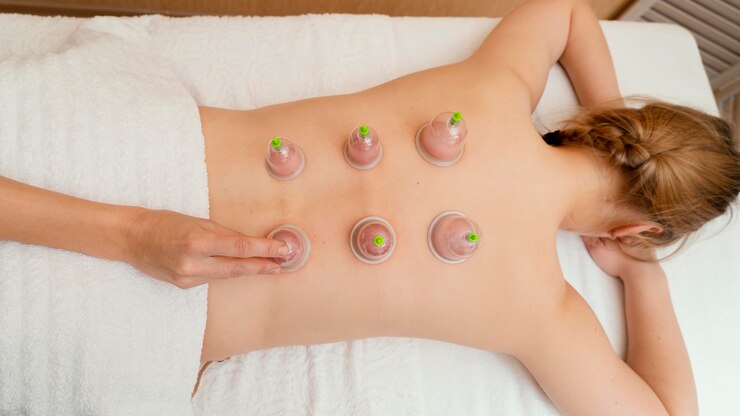Hijama, also referred to as cupping therapy, is an ancient form of alternative medicine that has gained prominence around the world, particularly in the Middle East. It involves creating suction on the skin using specially designed cups, which may either be made of glass, bamboo, or silicone. This therapeutic practice is rooted in traditional healing systems and is believed to provide a myriad of health benefits. In this article, we explore the various benefits associated with Hijama in Dubai and how it can enhance physical and emotional well-being.
Understanding the Basics of Hijama
Hijama is often classified under alternative medicine and is part of traditional Islamic medicine. The technique involves two primary methods: dry cupping, where the cups are applied without any incisions, and wet cupping (or Hijama), in which small incisions are made on the skin to draw out a small amount of blood along with the suction.
Historical Context
The practice of Hijama dates back thousands of years, with roots traced to ancient Egyptian and Chinese medicine. Its application has been documented in various cultures and spiritual texts, underscoring its enduring significance.
How Hijama Works
The fundamental principle behind Hijama is to stimulate blood flow and promote healing. By creating suction on the skin, patients may experience a release of lactic acid, which can alleviate muscle tension. The net effect can lead to improved circulation and an overall sense of well-being.
Physical Benefits of Hijama
Pain Relief
One of the most commonly reported benefits of Hijama is pain relief. Many individuals who suffer from chronic pain conditions, such as arthritis, lower back pain, and migraines, have found relief through this therapeutic method. The suction created by the cups may help relieve tension in muscles and promote relaxation, which can alleviate pain symptoms.
Improved Blood Circulation
Hijama is believed to stimulate blood circulation, which is essential for facilitating the delivery of oxygen and nutrients to tissues in the body. Improved circulation can enhance overall health by promoting cellular repair and reducing the risk of various health issues.
Muscle Recovery
Athletes and fitness enthusiasts often turn to Hijama for faster muscle recovery. After intense workouts, Hijama may help clear metabolic waste products such as lactic acid, leading to quicker recovery times and improved athletic performance.
Detoxification
A significant advantage of Hijama is its detoxification effect. By promoting blood flow and lymphatic drainage, it helps the body get rid of toxins and metabolic wastes. This detoxifying action can contribute to improved overall health and vitality.
Emotional and Psychological Benefits
Stress Relief
In our fast-paced world, stress is a common ailment that affects many. Hijama is known to have a calming effect on the nervous system, which may benefit those dealing with anxiety and stress. The relaxation achieved during a session can help facilitate mental clarity and emotional stability.
Enhancing Mood
Many practitioners and patients report that Hijama can lead to improvements in mood. The process may release endorphins and other feel-good hormones, contributing to an overall sense of happiness and emotional well-being.
Improved Sleep Quality
Individuals struggling with sleep disturbances may find that Hijama helps in achieving better sleep. The relaxation fostered by a session may alleviate insomnia and promote deeper, more restorative sleep patterns.
Health Condition Management
Respiratory Health
Hijama may assist in alleviating respiratory issues such as asthma and bronchitis. The suction can help clear mucus from the lungs, providing relief to those suffering from breathing difficulties.
Digestive Health
For individuals experiencing digestive issues, Hijama may help enhance gastrointestinal function. Improved blood circulation and stimulation of abdominal organs can alleviate problems like bloating, constipation, and digestive discomfort.
Skin Conditions
Cupping therapy is also thought to improve skin conditions such as acne, eczema, and psoriasis. The increase in blood flow and lymphatic drainage can promote clearer skin and reduce inflammation.
FAQs
What types of conditions can Hijama help alleviate?
Hijama may help relieve a variety of conditions such as chronic pain, respiratory issues, digestive problems, and certain skin conditions, alongside promoting overall wellness.
How long does a typical Hijama session last?
A typical session can last between 30 to 60 minutes, depending on the individual’s requirements and the practitioner’s methods.
Is there anyone who should avoid Hijama?
While Hijama is safe for many, it’s advisable for individuals with specific medical conditions (like bleeding disorders or skin infections) to consult with a healthcare professional before undergoing treatment.
How often should one get Hijama treatments for optimal results?
The frequency of Hijama treatments can vary based on individual needs. Some may benefit from regular sessions (e.g., once a month), while others might prefer only occasional treatments for maintenance.
Conclusion
The popularity of Hijama reflects its growing acceptance as a legitimate therapeutic remedy. With a diverse range of physical and emotional benefits, as well as its historical significance, Hijama offers a holistic approach to health and wellness. Many individuals are discovering the therapeutic effects of this ancient practice, contributing to a broader acceptance of alternative medicine in modern health care.





Comments